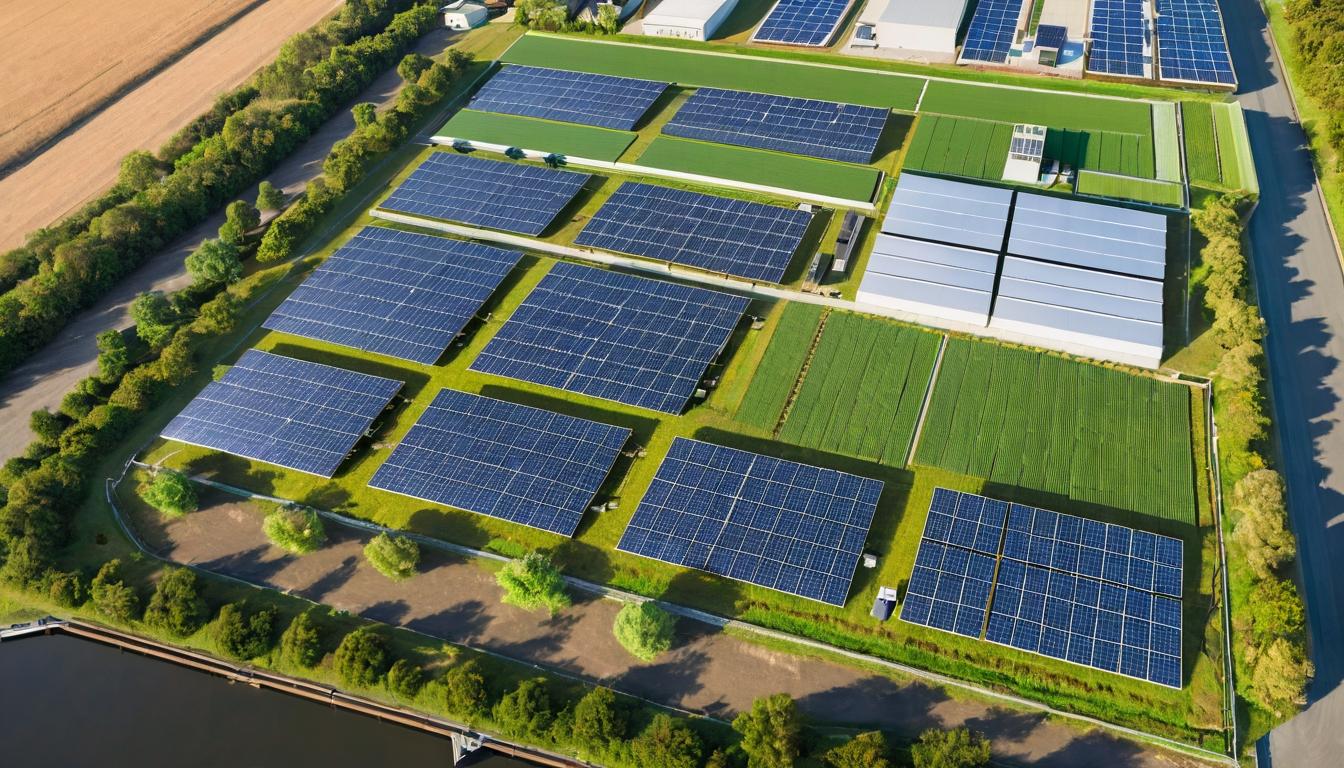The solar industry is undergoing a transformation so rapid that even industry insiders struggle to keep pace. While most people still picture rooftop panels when they think of solar, the reality has evolved into something far more complex and revolutionary. From floating solar farms on reservoirs to building-integrated photovoltaics that turn entire skyscrapers into power generators, the technology is breaking free from traditional constraints.
Recent breakthroughs in perovskite solar cells are rewriting the efficiency playbook. These next-generation materials promise conversion rates that could make current silicon panels look primitive by comparison. The implications extend beyond just cheaper electricity—they could fundamentally reshape how we design buildings, power transportation, and even manage agricultural land. Researchers are now talking about transparent solar windows and solar paint that could turn any surface into a power source.
Meanwhile, the energy storage revolution is quietly creating a parallel transformation. The days of solar being an intermittent power source are numbered as battery costs continue their dramatic descent. What's particularly fascinating is how storage is evolving beyond the familiar lithium-ion format. Flow batteries, compressed air storage, and even gravitational energy systems are emerging as viable alternatives, each with unique advantages for different applications.
Corporate energy procurement is undergoing its own quiet revolution. Major companies are no longer just buying renewable energy credits—they're building their own solar microgrids and entering into complex power purchase agreements that would have been unimaginable a decade ago. The sophistication of these deals reflects a fundamental shift in how businesses view energy: not as a cost to minimize, but as a strategic asset to optimize.
Supply chain dynamics tell another compelling story. The global race for solar manufacturing dominance has created geopolitical tensions and opportunities that mirror the semiconductor industry. Recent trade policies and domestic manufacturing incentives are reshaping where and how solar components are produced, with implications for national security, job creation, and global climate goals.
Community solar represents one of the most democratizing trends in the energy transition. These shared solar gardens allow renters, low-income households, and those with unsuitable roofs to participate directly in the clean energy economy. The model is proving particularly powerful in states with supportive policies, creating new economic opportunities while expanding access to clean power.
The integration of artificial intelligence into solar operations is creating what some are calling 'the smartest grid in history.' Machine learning algorithms now optimize panel performance in real-time, predict maintenance needs before failures occur, and manage complex energy flows across distributed networks. This digital layer is turning solar arrays from passive generators into intelligent energy assets.
Floating solar represents one of the most ingenious solutions to land use conflicts. By deploying panels on reservoirs, wastewater treatment ponds, and other water bodies, developers are creating dual-use systems that generate power while reducing evaporation and algae growth. The potential scale is staggering—just covering a fraction of the world's man-made water bodies could power entire countries.
The workforce transformation underway in the solar industry deserves more attention. As installation costs continue to fall, the value is shifting from hardware to skilled labor. This creates both challenges and opportunities for workforce development, with implications for vocational education, unionization, and economic mobility in communities transitioning from fossil fuel economies.
Perhaps most intriguing are the emerging business models that treat solar not just as energy generation, but as a platform for additional services. Solar-plus-storage systems are now providing grid stabilization services, participating in wholesale energy markets, and creating new revenue streams for homeowners and businesses alike. This evolution from simple power production to multi-service energy platforms represents the next frontier of value creation.
As solar penetration increases, we're seeing fascinating behavioral changes among energy consumers. The combination of smart meters, time-of-use rates, and home energy management systems is creating a new generation of 'energy citizens' who actively manage their consumption patterns. This engagement represents a cultural shift as significant as the technological one.
The international landscape reveals both cooperation and competition. While climate goals create shared purpose, national interests and industrial policies are shaping very different solar futures across regions. The contrast between China's manufacturing dominance, Europe's integration focus, and America's innovation-driven approach creates a complex global ecosystem with winners and losers still being determined.
Looking ahead, the most exciting developments may come from unexpected intersections. Solar-powered hydrogen production, agricultural photovoltaics that combine food and energy production, and solar thermal applications for industrial processes represent just a few of the hybrid solutions emerging. These integrated approaches suggest that solar's ultimate impact may be less about replacing existing energy sources and more about enabling entirely new ways of living and working.
The speed of change creates both excitement and anxiety. Regulators struggle to keep pace with technological advances, utilities grapple with business model disruption, and communities wrestle with the visual and economic impacts of large-scale deployment. These tensions reflect a society in transition, moving from centralized fossil fuel systems toward a distributed, renewable future that we're only beginning to understand.
The solar revolution is accelerating, but are we ready for what's coming next?

